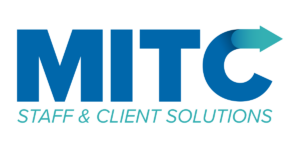Rising Layoffs Provide Opportunity for Providers
Reprinted from Open Minds 9/8/2022
In health care, digital health companies have been hard hit over the past few months. In fact, Digital Health Business & Technology recently reported that since June 1 of this year, 17 major health care-related companies have let go of a significant number of workers. In fact, the layoffs seem to be a daily occurrence in the digital health sector (see Tracking Layoffs Across The Industry).
But it’s not only those in the digital health category that feel the economic pain. Employees within every sector of health care are uploading resumes on job sites and interviewing for new positions. The Santa Cruz Valley Hospital in Tucson, Arizona, laid off approximately 300 staff (see Employees Of Closed Green Valley Hospital Left Without Pay, Seek Answers). This month in California, Watsonville Community Hospital will cut 673 from its staff (see California Hospital Plans For 673 Layoffs If Sale Falls Through). And in Tampa Bay, Florida, Shriners Hospital For Children announced they will layoff 20 employees this September after cutting 38 employees in April. Pediatric clinic chain Brave Health just announced planned layoffs for a third of its staff (see Portland’s Brave Care To Lay Off One-Third Of Staff).
It appears that the digital health layoffs and the layoffs in health care service capacity have different drivers. For the digital health companies, which are largely for-profit and investor-financed organizations, rising interest rates and declining investor appetite for deficit financing are causing layoffs (see A “Crucible Moment” Or No?). For health care provider organizations, which are mainly non-profit, we are seeing the post-pandemic market landscape take shape—with rising costs, flat rates, increased competition, and an end to federal supports.
This period of instability is painful for individuals who lose their employment and are forced to adjust their career plans. But for executives in the field, these employment shifts create a pool of available new talent—at a time when the competition for talent in the health and human service space has never been greater. However, recruiting new talent requires a nimble approach to recruitment, with the ability to respond with specificity in recruiting available direct care workers, highly skilled specialists, and/or managerial and executive team members. Doing that means having a focused outreach strategy. Craft a statement of your organization’s appeal to specific talent groups, and target specific talent cohorts using social media, outreach to outplacement firms, and networking with professional groups. These are just some examples of tactical approaches to targeted talent acquisition.
The period ahead is likely to be one of many pivots for health and human service organizations of all types—and more layoffs are likely as executive teams manage their service line portfolios. For the nimble executive team, there is the opportunity to acquire new talent amidst these shifts.
For help with hiring and attracting qualified applicants check out myApplicants. Download the fact sheet for more information.


Leave a Reply
Want to join the discussion?Feel free to contribute!